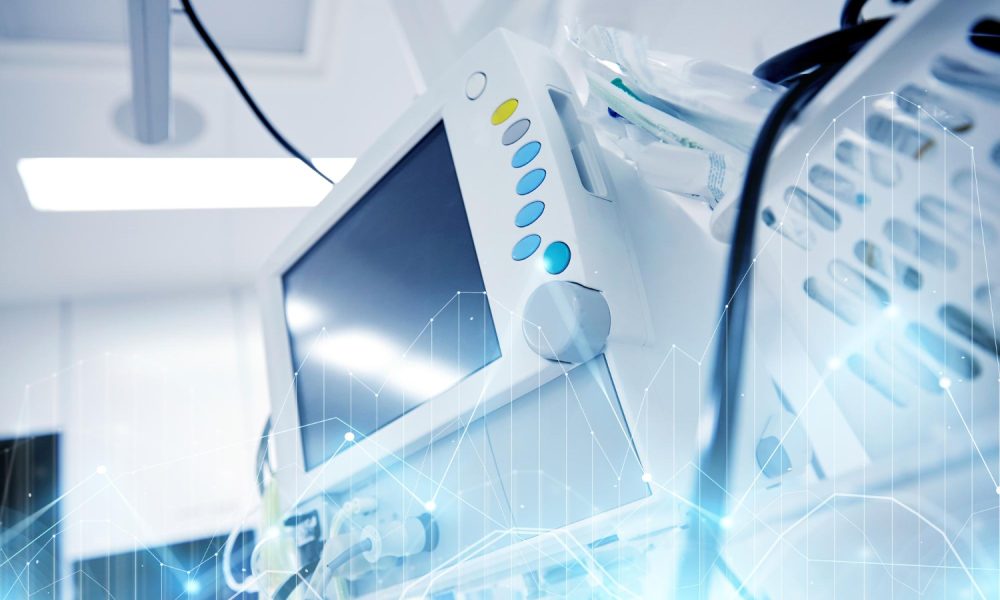
An ETF for strategic long-term investors (Photo: Freepik, Syda_productions)
For investors who want to spread the growth of medical technology, the Ishares US Medical Devices ETF (ISIN: IE00BMX0DF60) A solid basis. The fund, which has existed since August 2020, depicts the Dow Jones Us Select Medical Equipment Index and focuses on the 48 largest US Medtech companies. With a total cost rate of only 0.25 percent, it is one of the cheapest vehicles in the sector – a decisive advantage for long -term investments.
Portfolio depth: from robotics to telemedicine
The strength of the ETF lies in its diversification: it covers all relevant sub -areas, from robot -based surgery (intuitive surgical) to imaging methods (Thermo Fisher) to digital health solutions (Dexcom).
In order to limit the lump risk, the index at the same time limits the weighting of individual titles to a maximum of 20 percent. The geographical focus is clearly on the United States, which make up over 95 percent of the fund volume – not a disadvantage, because the American market is considered the most innovative and most profitable for medical technology.
The portfolio reads like the WHO IS WHO in the industry: Led by Abbott Laboratories (16.9 percent) and intuitive surgical (15.6 percent) there are also heavyweights such as Boston Scientific (10.9 percent) and Medtronic (9.1 Percent) among the top positions.
Performance in detail: Constance meets dynamics
Since its laying down more than 4 years ago, the ETF has achieved an average annual return of around 10 percent, with a particularly strong plus of 23 percent over a year. But this does not only shine in bull markets ETF. He also shows himself robust in crisis phases: in the interest rate phase 2022, when many tech shares collapsed and lost an average of 12 percent on average, the fund lost only 7 percent-a proof of the relatively defensive character of the Medtech sector.
Pro and contra: criticism and counter arguments
The biggest objection to the ETF is still its lack of global diversification. While companies such as Siemens Healthineers (Germany) or Sonova (Switzerland) are leaders in Europe, they are missing in the portfolio. This could prove as a disadvantage in the future if other regions catch up with state support programs-such as China’s Healthy China 2030 Initiative or India expansion of telemedicine platforms.
However, the arguments for the US focus weigh heavily: Skalen effects play a crucial role in medical technology, and here US companies dominate primarily due to their higher research budgets, which make up an average of 8 percent of sales, in Europe it is only 5 percent. These financial resources enable you to develop innovative products faster and to bring them onto the market.
They also pursue aggressive acquisition strategies to further expand their market position. Another advantage for US Medtech companies is political security because, in contrast to their Chinese competitors, they are hardly affected by geopolitical trade voltages. This creates a more stable environment for investments and long -term planning in the industry.
Basic information on the ETF:
- Issuer: Blackrock Asset Management
- WKN: A2P64W
- ISIN: IE00BMX0DF60
- Identification date: August 3, 2020
- Fund currency: USD
- Fund size: approx. $ 230 million
- Distribution type:
- Replication: physical
Conclusion: An ETF for strategic long -term investors
The Ishares US Medical Devices ETF is not a speculation vehicle, but an instrument for investors who rely on the structural growth drivers of medical technology. With its inexpensive structure, broad diversification and focus on the most innovative market, it offers a solid basis for every portfolio. If you want an additional international exposure, you can combine it with a European or Asian MedTech ETF-but also as a single position, you will convince with simplicity and performance.
In a world in which health technology becomes a critical infrastructure, this ETF is more than just a bet on the future. It is an investment in the inevitable reality of medical progress.
Disclaimer:
No investment advice. No call to buy or sell securities.
